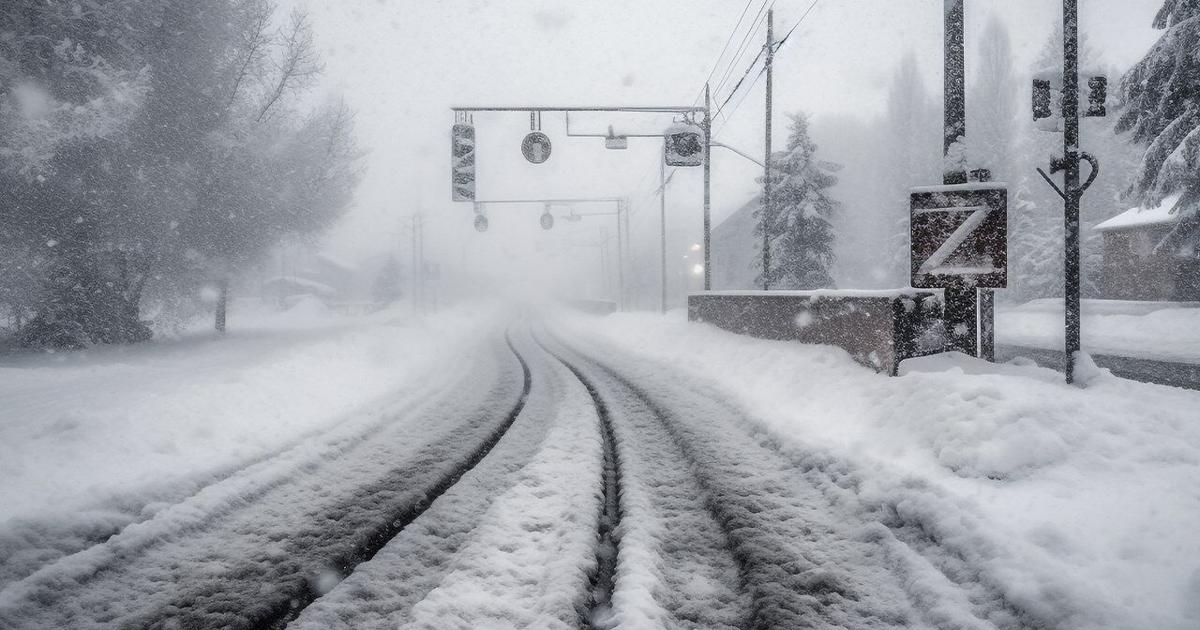A late-winter storm was expected to strengthen into a nor’easter as it moved slowly toward the Atlantic coast on Tuesday, bringing with it a forecast of six to 18 inches of snow across more than seven states, from northeast Pennsylvania and far northwest New Jersey through much of New York and New England.
The storm, expected to last through Wednesday, began dumping heavy, wet snow in some parts of the Northeast on Tuesday after bringing rain to the region the day before.
That precipitation, combined with strong winds, could disrupt travel and flood coastal communities, the National Weather Service said. Most of the region was under a winter storm warning or winter weather advisory as of 6:30 a.m. on Tuesday. More than 60,000 customers were without power in parts of Massachusetts, New York and Vermont, according to PowerOutage.us.
The snowfall rate was expected to intensify through daybreak. Some parts of the Catskill, Berkshire and Green Mountains were expected to receive over two inches per hour, the Weather Service office in Albany said.
New York City was expecting far less — up to a half inch of snow per hour later on Tuesday.
Elsewhere, the wet, heavy snow, combined with wind gusts of up to 60 miles per hour, could bring down tree branches and power lines, knocking out power to hundreds of thousands of homes and businesses, the authorities said.
Widespread minor coastal flooding and beach erosion were also possible before the storm slowly moves away from the New England coast on Wednesday, the Weather Service said.
In New Hampshire, where snow was expected to fall over the southern half of the state, more than 50 towns postponed municipal elections that had been scheduled for Tuesday, according to the secretary of state’s office.
In Worcester, Mass., which was bracing for up to 18 inches of snow, officials announced that schools would be closed on Tuesday, one of many such cancellations expected across the Northeast. In Maine, officials said that state offices would be closed on Tuesday, as the authorities urged residents to stay off the roads.
Gov. Kathy Hochul of New York declared a state of emergency that began at 8 p.m. Monday, allowing the state to deploy additional resources.
Ms. Hochul warned that the wet snow was going to “come down like a brick” — as much as three inches an hour in some areas — making travel treacherous, if not impossible.
“This will be a dangerous storm,” Ms. Hochul said. “Please stay off the roads for your own safety. Stay in your homes.”
Ms. Hochul said that 100 National Guard troops had been mobilized to respond to emergencies and that additional utility crews had been called in, including some from Canada.
“It’s going to be one where we’re going to see serious loss of power,” Ms. Hochul said. “That is a statement of fact.”
The Weather Service said up to 16 inches of snow could blanket Albany and that up to 15 inches could fall in Binghamton, Ithaca and Syracuse in New York.
Boston was preparing for at least four inches of snow and wind gusts of up to 55 m.p.h. Mayor Michelle Wu said the city had asked construction companies to secure cranes and other heavy equipment.
Jon Mitchell, the mayor of New Bedford, Mass., a port city about 60 miles south of Boston, said that crews were clearing catch basins to prevent rain and snow from pooling.
“The big issue, really, is the risk of flooding for us — and the wind gusts,” he said in an interview.
Gov. Philip D. Murphy of New Jersey said that state offices would open two hours later than normal on Tuesday and that some communities in the northwestern part of the state could receive a foot of snow. He declared a state of emergency that began at 8 p.m. on Monday for Warren, Sussex, Morris, Passaic and Bergen counties.
“Please, please, please be careful,” Mr. Murphy said at a news conference on Monday. “If you don’t have to go out, don’t go out.”
Craig Hallstrom, regional president of electric operations for Eversource, a utility that serves Connecticut, Massachusetts and New Hampshire, said that the storm was “so big” that it could stretch resources across the region.
He said the utility was closely tracking the rain-snow line and was particularly concerned that wind gusts of 40 m.p.h. were expected across Massachusetts, with even stronger gusts along the coast.
Mr. Hallstrom said that to prepare, Eversource had called in hundreds of additional workers from other states.
Mike Ives, Judson Jones and April Rubin contributed reporting.

















Discussion about this post